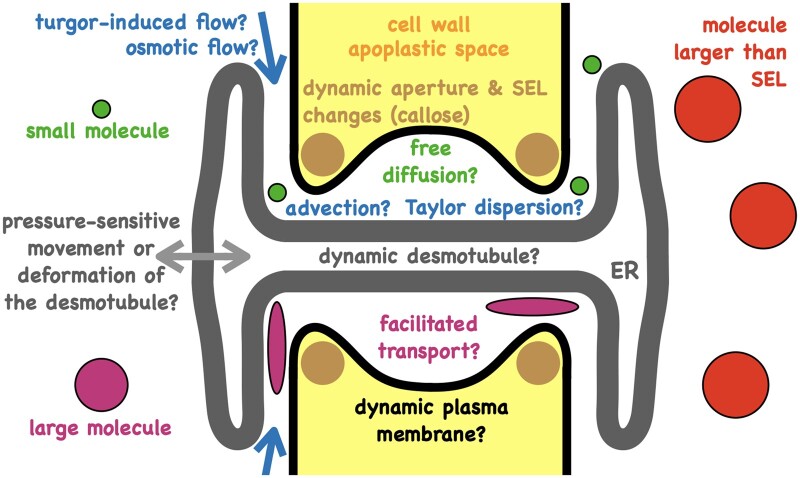Figure 4.
Plasmodesmata may allow for different modes of transport between cells. Small molecules are likely to be able to diffuse through plasmodesmata. This is usually modeled as normal diffusion with or without geometrical hindrance factors. If pressure differences exist between cells then advection may occur. For larger molecules the mode of transport remains unclear. Selective molecular transport through plasmodesmata may lead to concentration differences (of those molecules that cannot pass) between neighboring cells and potentially to osmotic flows through plasmodesmata, giving rise to osmotic and turgor pressure differences. Turgor pressure differences may lead to plasmodesmata closure via desmotubule/membrane dynamics. Depending on the transport route, turgor pressure or osmotic pressure may be more important which may give rise to some interesting flows and feedbacks. The precise modes of transport and their dependence on pressure, flow, dynamics of the plasma membrane, dynamics of the desmotubule, the associated proteins, and interactions between plasma membrane and the desmotubule remain to be characterized. SEL = size-exclusion limit (the maximum size of a molecule up to which movement through plasmodesmata is possible); ER = endoplasmic reticulum.

